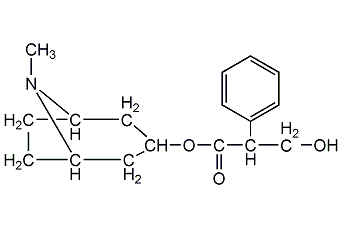
Structural formula
| Physical competition number | 0293 |
|---|---|
| Molecular formula | C7H7Br |
| Molecular weight | 171.03 |
| label |
o-bromotoluene, 1-bromo-2-methylbenzene, 2-bromotoluene, o-Bromotoluene, 1-Bromo-2-methyl-benzene, CH3C6H4Br, Halogenated hydrocarbon solvents, aromatic compounds |
Numbering system
CAS number:95-46-5
MDL number:MFCD00000068
EINECS number:202-421-7
RTECS number:XS7965500
BRN number:1904176
PubChem number:24851133
Physical property data
1. Properties: colorless liquid[1]
2. Melting point (℃): -27.8[2]
3. Boiling point (℃): 181.7[3]
4. Relative density (water=1): 1.422[4]
5. Relative vapor density (air=1): 5.9[5]
6. Saturated vapor pressure (kPa): 1.33 (59.1℃)[6]
7. Octanol/water partition coefficient: 3.43[7]
8. Flash point (℃) : 78.89 (CC) [8]
9. Solubility: Insoluble in water, soluble in ethanol, ether, and benzene, miscible in carbon tetrachloride. [9]
Toxicological data
1. Acute toxicity[10]
LD50: 1540mg/kg (rat oral)
LC50 : 6800mg/m3 (rat inhalation)
2. Irritation No information available
Ecological data
1. Ecotoxicity No data available
2. Biodegradability No data available
3 .Non-biodegradability[11] In the air, when the concentration of hydroxyl radicals is 5.00×105/cm3 When, the degradation half-life is 9.8d (theoretical).
Molecular structure data
1. Molar refractive index: 38.76
2. Molar volume (cm3/mol): 121.8
3. Isotonic specific volume (90.2K ): 295.4
4. Surface tension (dyne/cm): 34.4
5. Dielectric constant:
6. Dipole moment (10-24cm3 ):
7. Polarizability: 15.36
Compute chemical data
1. Reference value for hydrophobic parameter calculation (XlogP): None
2. Number of hydrogen bond donors: 0
3. Number of hydrogen bond acceptors: 0
4. Number of rotatable chemical bonds: 0
5. Number of tautomers: none
6. Topological molecule polar surface area 0
7. Number of heavy atoms: 8
8. Surface charge: 0
9. Complexity: 70.8
10. Number of isotope atoms: 0
11. Determine the number of atomic stereocenters: 0
12. Uncertain number of atomic stereocenters: 0
13. Determine the number of chemical bond stereocenters: 0
14. Uncertain number of stereocenters of chemical bonds: 0
15. Covalency�Number of units: 1
Properties and stability
1. When exposed to high heat or burned, it decomposes and releases toxic gases. Combustible and toxic. After oxidation, o-bromobenzoic acid can be generated.
2. Stability[12] Stable
3. Incompatible substances[13] Strong oxidizing agent
4. Polymerization hazard[14] No polymerization
5. Decomposition products[15] Hydrogen bromide
Storage method
Storage Precautions[16] Store in a cool, ventilated warehouse. Keep away from fire and heat sources. Keep container tightly sealed. They should be stored separately from oxidants and food chemicals, and avoid mixed storage. Equipped with the appropriate variety and quantity of fire equipment. The storage area should be equipped with emergency release equipment and suitable containment materials.
Synthesis method
Originated from o-toluidine through diazotization and substitution. Cool the solution of o-toluidine and 40% hydrobromic acid to 0-5°C, add sodium nitrite solution dropwise, and control the dropping speed to avoid the escape of a large amount of brown gas. After the addition is completed, stir for 15 minutes and test the end point with potassium iodide starch solution (it should turn blue immediately). After the diazotization is completed, add copper powder, heat carefully, raise the temperature to 25-30°C and stop heating. Control the natural temperature rise to not exceed 50°C, and nitrogen gas will escape from the reaction. Incubate at 50°C for 1 hour, then steam distill the reaction solution to obtain an oily substance, wash it with 30% liquid alkali, concentrated sulfuric acid, and water in sequence, and dry it with anhydrous calcium chloride to obtain refined o-bromotoluene.

Purpose
Used in organic synthesis and as solvent. [17]
extended-reading:https://www.newtopchem.com/archives/44368extended-reading:https://www.newtopchem.com/archives/1738extended-reading:https://www.newtopchem.com/archives/44053extended-reading:https://www.cyclohexylamine.net/foam-stabilizer-non-silicone-silicone-oil/extended-reading:https://www.cyclohexylamine.net/low-odor-catalyst-dabco-amine-catalyst/extended-reading:https://www.bdmaee.net/wp-content/uploads/2022/08/Pentamethyldiethylenetriamine-CAS-3030-47-5-PC5.pdfextended-reading:https://www.cyclohexylamine.net/a300-catalyst-a300-catalyst-a-300/extended-reading:https://www.bdmaee.net/wp-content/uploads/2022/08/31-7.jpgextended-reading:https://www.bdmaee.net/u-cat-660m-catalyst-cas63469-23-8-sanyo-japan/extended-reading:https://www.bdmaee.net/nn-dimethylpropylamine/












